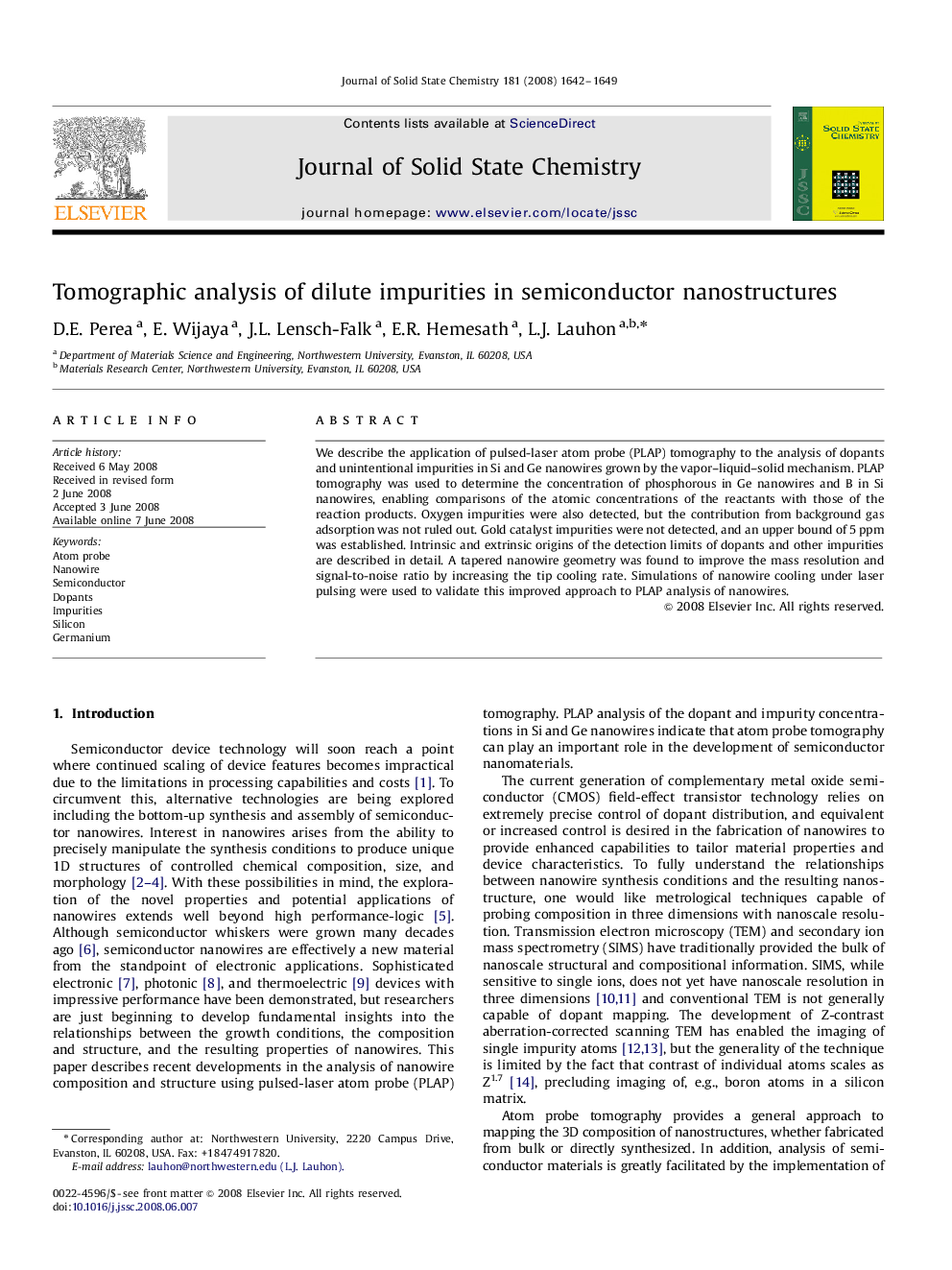| Article ID | Journal | Published Year | Pages | File Type |
|---|---|---|---|---|
| 1333654 | Journal of Solid State Chemistry | 2008 | 8 Pages |
We describe the application of pulsed-laser atom probe (PLAP) tomography to the analysis of dopants and unintentional impurities in Si and Ge nanowires grown by the vapor–liquid–solid mechanism. PLAP tomography was used to determine the concentration of phosphorous in Ge nanowires and B in Si nanowires, enabling comparisons of the atomic concentrations of the reactants with those of the reaction products. Oxygen impurities were also detected, but the contribution from background gas adsorption was not ruled out. Gold catalyst impurities were not detected, and an upper bound of 5 ppm was established. Intrinsic and extrinsic origins of the detection limits of dopants and other impurities are described in detail. A tapered nanowire geometry was found to improve the mass resolution and signal-to-noise ratio by increasing the tip cooling rate. Simulations of nanowire cooling under laser pulsing were used to validate this improved approach to PLAP analysis of nanowires.
Graphical abstractScanning electron micrograph of a P-doped Ge nanowire including the Au catalyst tip (top). The corresponding 3D reconstruction (middle) and mass spectrum (bottom) of the boxed region produced via atom probe tomography. From the 3D reconstruction and mass spectrum, the concentration and distribution of dopants can be determined.Figure optionsDownload full-size imageDownload as PowerPoint slide
